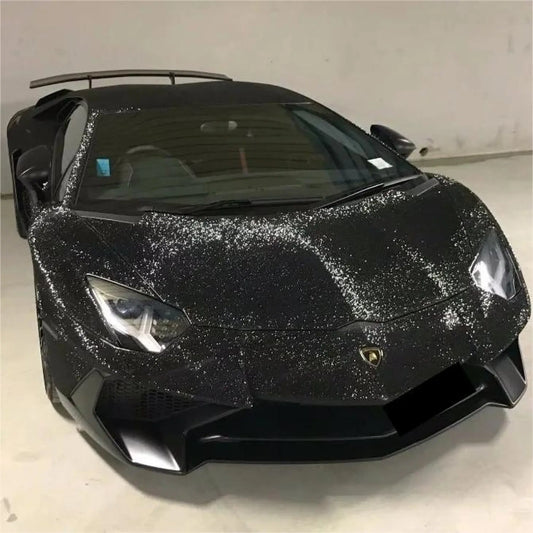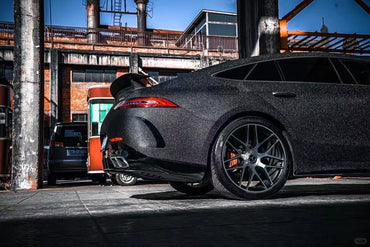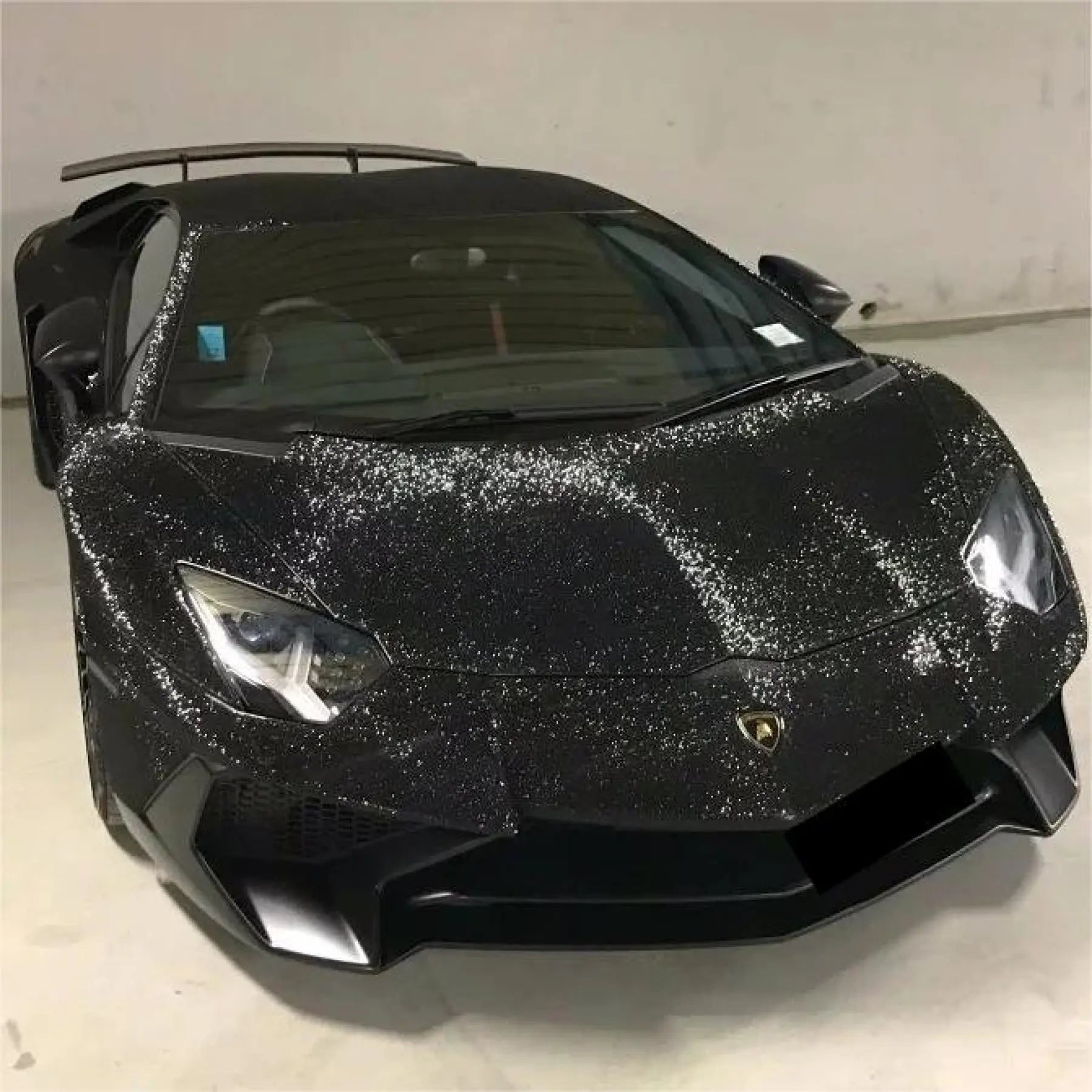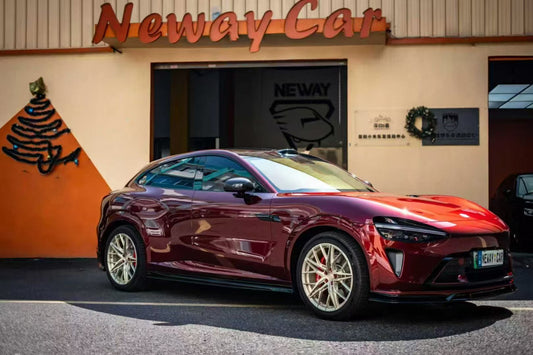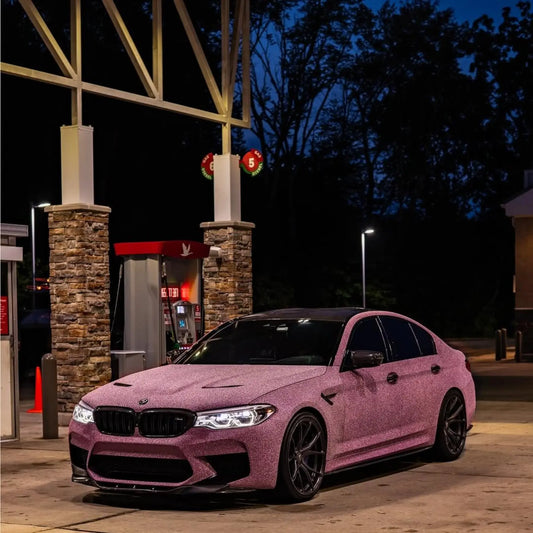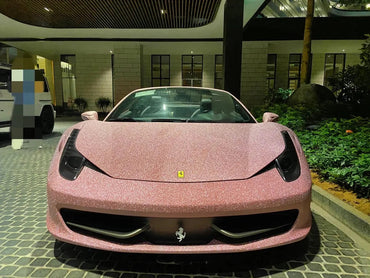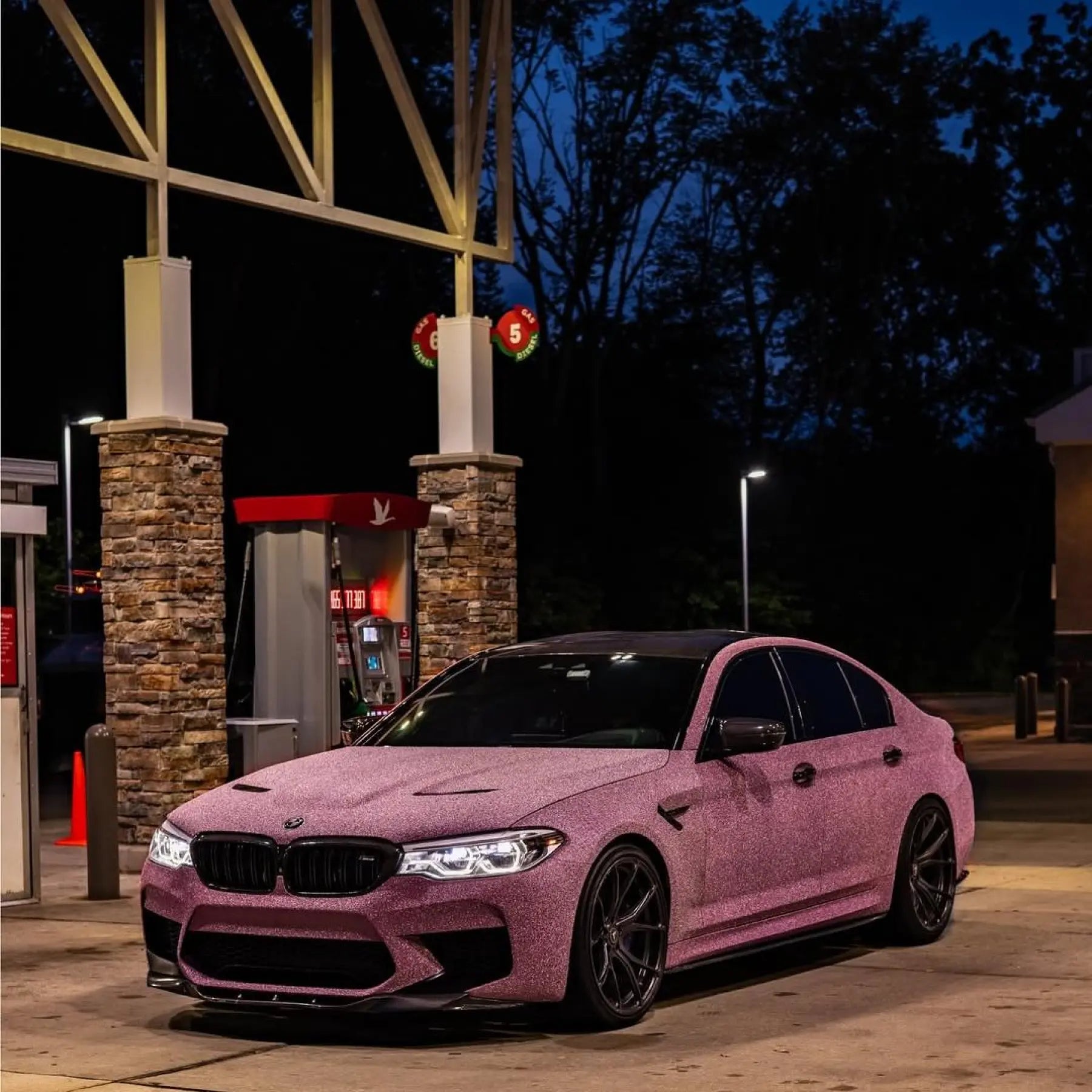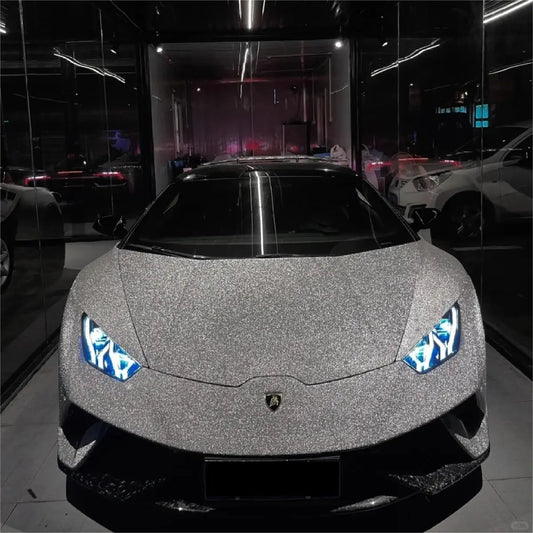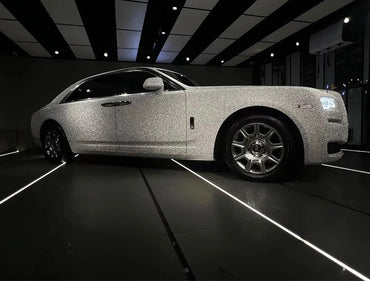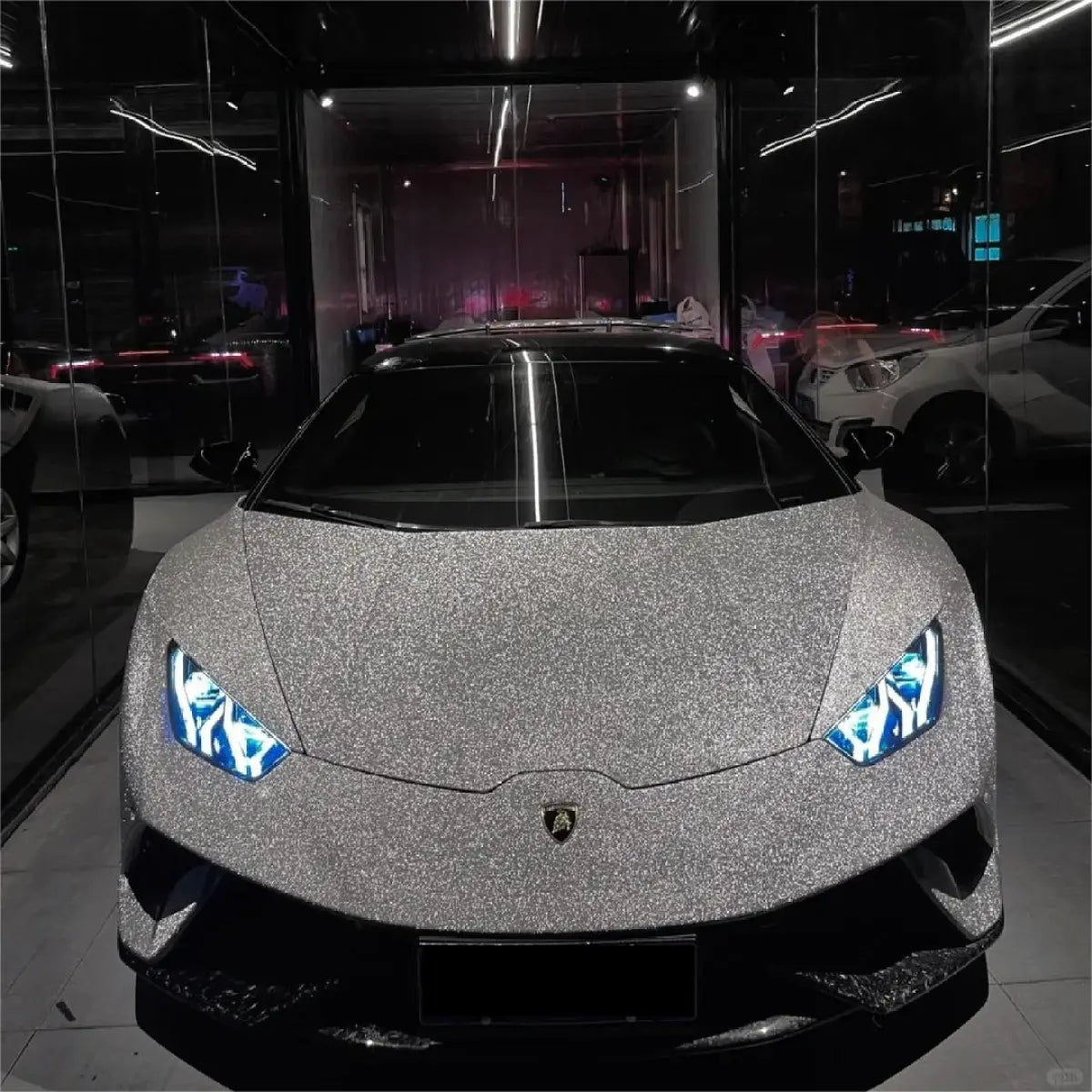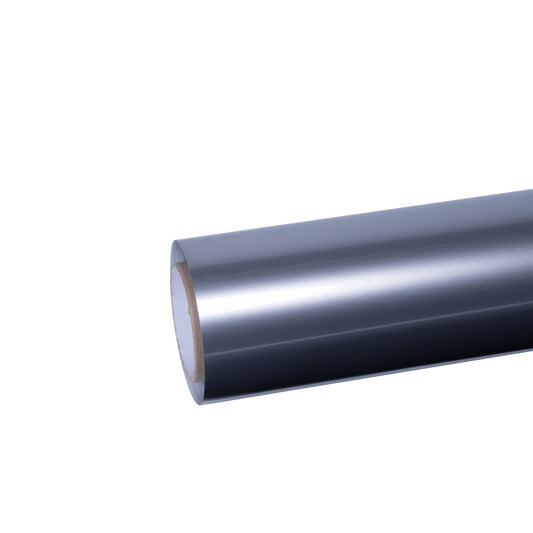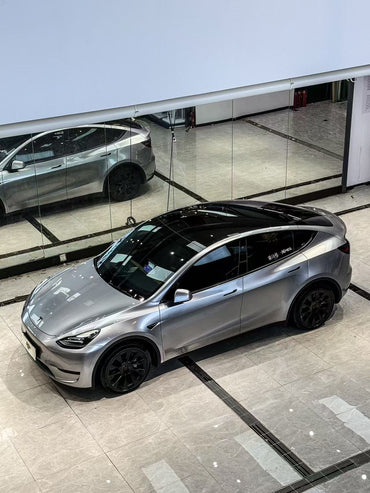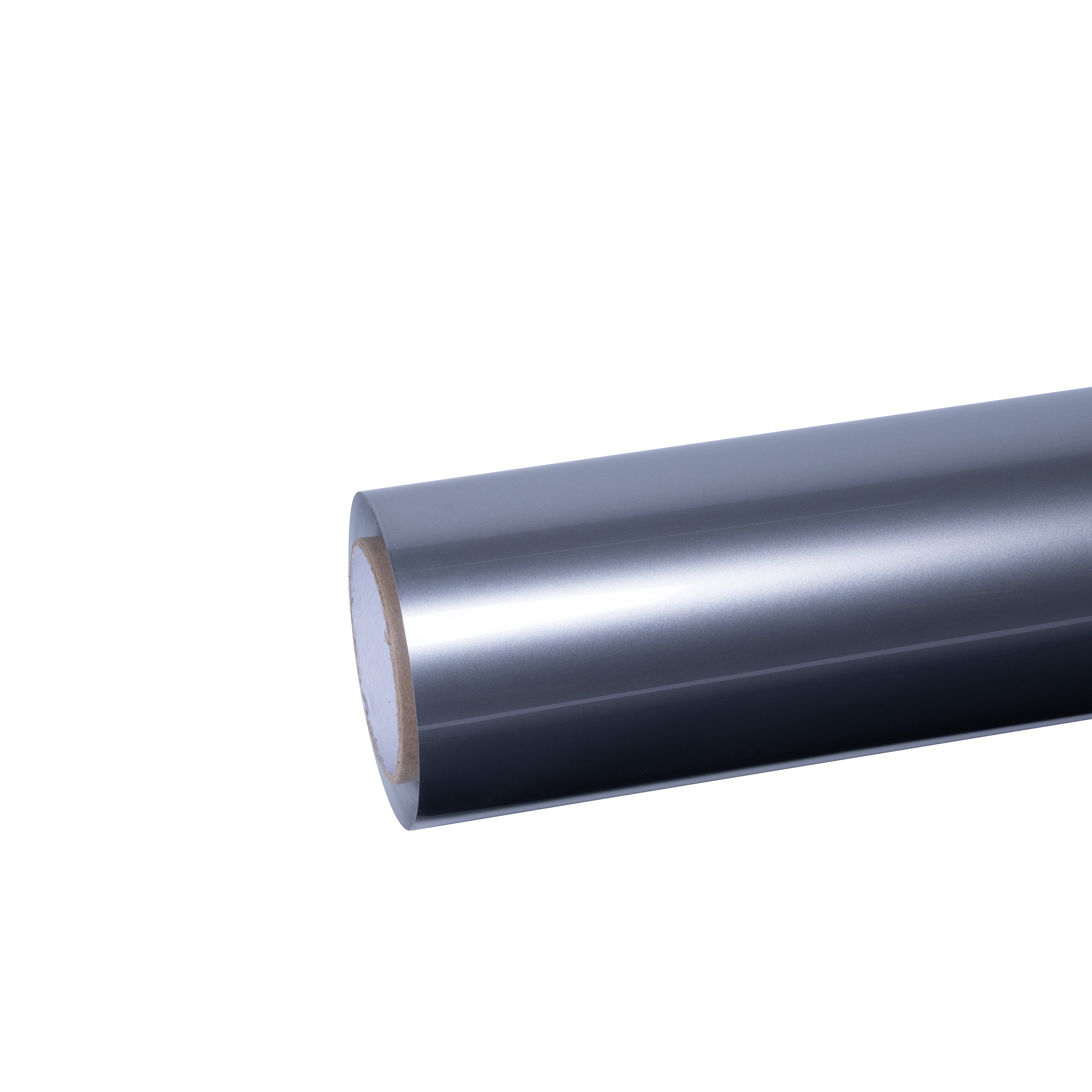Average Car Wrap Lifespan: What to Expect
The lifespan of a car wrap varies significantly based on material type, quality, installation, and maintenance. Here's what you can expect from different wrap materials:
Vinyl Wrap Lifespan
Standard vinyl wraps typically last between 3 to 7 years with proper care. High-quality vinyl materials from premium manufacturers can reach the upper end of this range, while lower-grade options may show wear after just 2 to 3 years.
Factors affecting vinyl wrap longevity:
- Material quality: Premium cast vinyl outlasts calendered vinyl
- Finish type: Gloss wraps generally last longer than matte or specialty finishes
- Climate exposure: Extreme heat, cold, and UV rays accelerate wear
- Maintenance routine: Regular cleaning and protection extend lifespan
Sailifilm offers a comprehensive range of high-quality vinyl wraps, including gloss finishes, ultra-matte wraps, metallic options, and specialty finishes like liquid chrome and rainbow laser wraps.
Paint Protection Film (PPF) Lifespan
Paint protection film offers superior durability, typically lasting between 5 to 10 years or even longer with proper maintenance. High-quality PPF is specifically engineered for long-term protection against environmental damage, rock chips, and scratches.
PPF advantages over vinyl:
- Self-healing properties: Minor scratches disappear with heat exposure
- Thicker material: 6-10 mils thick compared to vinyl's 2-4 mils
- Superior protection: Designed to absorb impacts and resist abrasion
- UV resistance: Advanced formulations prevent yellowing and fading
- Warranty coverage: Many premium PPF products include 10-year warranties
Sailifilm's TPU paint protection wrap and colored paint protection film combine maximum durability with aesthetic options, allowing you to protect and customize simultaneously.
Lifespan by Wrap Finish Type
Different finishes have varying durability characteristics:
Gloss Wraps: 4-6 years
- Easiest to maintain and clean
- Better resistance to environmental factors
- Popular for their sleek, shiny finish
- Browse Sailifilm's best sellers for top-rated gloss options
Satin Wraps: 4-6 years
- Balanced between matte and gloss
- Easier to clean than full matte finishes
- Smooth, soft reflection
- Durable and stylish
Matte Wraps: 3-6 years
- Unique non-reflective appearance
- More prone to staining
- Requires more careful maintenance
- Explore ultra-matte wrap collection
Chrome and Metallic Wraps: 3-5 years
- Eye-catching reflective finishes
- May show wear more quickly
- Requires gentle cleaning methods
- Check out liquid chrome and metallic vinyl
Carbon Fiber Wraps: 5-7 years
- Highly durable textured finish
- Can trap dirt in texture
- Requires thorough cleaning
- View 3D carbon fiber wrap
Specialty Wraps (Holographic, Color-Shifting, Glitter): 3-5 years
- Unique visual effects
- May require extra care
- Worth the maintenance for distinctive appearance
- Discover rainbow laser, crystal vinyl, and glitter sparkle wraps
Critical Factors Affecting Car Wrap Durability
Understanding what influences wrap longevity helps you make informed decisions and implement protective measures.
1. Material Quality and Brand
Premium vs. Budget Materials
The quality of vinyl or PPF material is the foundation of wrap durability. High-quality materials feature:
- Superior UV protection to prevent fading
- Strong adhesive formulations for long-lasting bond
- Advanced polymers for flexibility and strength
- Protective top coats resistant to scratches and stains
Investing in quality materials like those offered at Sailifilm ensures your wrap maintains its appearance throughout its expected lifespan. Consider ordering sample kits to evaluate material quality before committing to a full wrap.
2. Professional Installation vs. DIY
How Installation Impacts Lifespan
Proper installation significantly affects how long your wrap lasts:
Professional Installation Benefits:
- Precise surface preparation and cleaning
- Correct stretching and heat application techniques
- Bubble-free, smooth application
- Proper edge sealing and tucking
- Warranty protection on labor
DIY Installation Risks:
- Air bubbles that can expand over time
- Improper adhesion leading to premature peeling
- Incorrect heat application causing damage
- Weak edge sealing allowing moisture penetration
- Voiding product warranties
For complex wraps or full vehicle coverage, professional installation is strongly recommended. If attempting DIY on smaller sections, invest in proper wrapping tools including heat guns, squeegees, and precision knives.
3. Climate and Environmental Exposure
How Weather Affects Wrap Longevity
Your geographic location and storage conditions dramatically impact wrap lifespan:
Sun and UV Exposure:
- High-impact factor: Prolonged direct sunlight causes fading and material degradation
- Solution: Park in covered or shaded areas when possible
- UV protection: Premium wraps include UV-resistant top coats
- Expected impact: Wraps in sunny climates (Arizona, California, Florida) may fade 1-2 years earlier than moderate climates
Temperature Extremes:
- Heat: Causes vinyl to expand and contract, potentially leading to cracking
- Cold: Makes vinyl brittle and more susceptible to tearing
- Cycling: Constant temperature fluctuations accelerate wear
- Garage storage: Significantly extends wrap life by minimizing exposure
Moisture and Humidity:
- Rain and snow: Generally not harmful if wrap is properly sealed
- Salt and chemicals: Road salt and de-icing agents can corrode wraps
- Coastal areas: Salt air may accelerate deterioration
- Prevention: Regular washing removes corrosive substances
Pollution and Contaminants:
- Acid rain: Can etch into wrap material in polluted areas
- Tree sap and bird droppings: Acidic substances that cause permanent staining if not cleaned promptly
- Industrial fallout: Manufacturing areas may have airborne contaminants
4. Vehicle Usage and Driving Conditions
How You Use Your Vehicle Matters
Daily driving conditions influence wrap durability:
- Daily drivers: Experience more wear from constant exposure
- Highway driving: Rock chips and debris impact more frequently
- City driving: Stop-and-go traffic and parking lot dings
- Off-road vehicles: Extreme wear from brush, mud, and rough terrain
- Garage-kept show cars: Can exceed expected lifespan significantly
5. Maintenance and Care Routine
The Single Most Controllable Factor
How you maintain your wrap has the biggest impact on extending its lifespan. Proper care can add 2-3 years to your wrap's life, while neglect can cut it short by the same amount.
Essential Maintenance Tips for Maximum Wrap Lifespan
Follow these proven maintenance practices to keep your wrap looking fresh for years:
Regular Cleaning Schedule
Hand Washing Best Practices:
- Wash every 2-4 weeks minimum (weekly in dirty or salty conditions)
- Use pH-neutral car wash soap designed for vinyl
- Clean with soft microfiber cloths or wash mitts
- Rinse thoroughly with clean water
- Dry with chamois or microfiber drying towel to prevent water spots
What to Avoid:
- ❌ Automatic car washes with rotating brushes
- ❌ High-pressure washers above 2,000 PSI
- ❌ Abrasive scrubbing pads or stiff brushes
- ❌ Harsh chemicals, solvents, or petroleum-based cleaners
- ❌ Waxes containing abrasive compounds
Stain and Contaminant Removal
Immediate Action Required:
- Bird droppings (acidic and can etch vinyl)
- Tree sap (sticky and attracts more dirt)
- Bug splatter (proteins can bond to surface)
- Fuel spills (can dissolve adhesive)
- Industrial fallout and tar
Cleaning Solution:
- Use citrus-based degreasers for tough stains
- Test all cleaners on inconspicuous area first
- Apply cleaning solution promptly—don't let stains set
- Gentle blotting motion rather than aggressive scrubbing
Protective Coatings
Extending Lifespan with Sealants:
- Vinyl-safe ceramic coatings provide extra UV protection
- Hydrophobic coatings make water and dirt less likely to stick
- Easier cleaning and maintenance with protective layer
- Can add 1-2 years to wrap lifespan
- Apply after wrap installation and reapply annually
Note: Never use carnauba-based waxes on matte, textured, or specialty wraps as they can alter the finish.
Parking and Storage
Protect Your Investment:
- Park in covered or shaded areas whenever possible
- Use car covers for long-term outdoor storage
- Garage storage ideal for maximizing lifespan
- Tree cover provides shade but watch for sap and bird droppings
- Consider portable carport for outdoor parking
Color-Specific Care
Different wrap colors require varying maintenance approaches:
- Dark colors (black wraps, purple wraps): Show water spots and dust more readily, require frequent washing
- Light colors (white wraps, silver wraps): Show dirt and stains but hide imperfections better
- Vibrant colors (red wraps, orange wraps, yellow wraps): Fade more noticeably in direct sunlight
- Specialty finishes (dual-color, glitter): May require extra care to maintain unique appearance
Warning Signs Your Car Wrap Needs Replacement
Recognizing when your wrap has reached the end of its lifespan prevents damage to underlying paint and maintains your vehicle's appearance. Watch for these telltale signs:
1. Color Fading and Loss of Vibrancy
Primary Indicator of Aging
Fading is one of the most common signs that your wrap is nearing the end of its life:
- UV damage: Prolonged sun exposure bleaches colors over time
- Uneven fading: Some sections fade faster than others
- Dull appearance: Loss of original gloss or finish
- Noticeable color shift: Particularly evident on vibrant colors like red, blue, and green wraps
When to Replace: If fading is widespread and makes your vehicle look worn or unprofessional, it's time for replacement. Localized fading on high-exposure areas (hood, roof) may be repairable with partial rewrap.
2. Bubbling and Lifting Edges
Adhesive Failure
Bubbles and peeling indicate the wrap is losing its bond with the vehicle surface:
- Air bubbles: Can trap moisture, leading to rust on metal panels
- Edge lifting: Typically starts at seams, door handles, or panel edges
- Moisture infiltration: Water getting under the wrap accelerates paint damage
- Dirt accumulation: Lifted edges collect debris and look unprofessional
When to Act: Address bubbling and peeling immediately. Small areas can sometimes be repaired, but widespread lifting requires full replacement. Leaving lifted vinyl can allow moisture to damage your vehicle's original paint.
3. Cracking, Flaking, and Material Breakdown
Structural Failure
Physical deterioration of the vinyl material signals the end of useful life:
- Cracks: Usually from age, UV damage, or extreme temperature cycling
- Flaking: Small pieces breaking off when touched
- Brittleness: Wrap feels stiff and inflexible
- Difficulty removing: Old wraps become increasingly difficult to remove cleanly
When to Replace: Cracks and flaking mean the material has lost its integrity. Replace immediately to prevent difficult removal and potential paint damage.
4. Permanent Stains and Discoloration
Irreversible Damage
Some stains penetrate the wrap material and cannot be cleaned:
- Water spots: Mineral deposits from hard water or acid rain
- Chemical stains: Road salt, fuel spills, or industrial contaminants
- Organic stains: Bird droppings, tree sap, or bug residue left too long
- Yellowing: Particularly common on white wraps and clear PPF
When to Replace: If professional cleaning cannot remove stains and they significantly impact appearance, consider replacement. Localized staining may be addressed with partial rewrap.
5. Extensive Scratches and Physical Damage
Impact and Abrasion Wear
While minor scratches are normal, extensive damage indicates replacement time:
- Deep scratches: Penetrating through vinyl to underlying paint
- Tears and gouges: From impacts, accidents, or vandalism
- Wear patterns: High-contact areas showing significant deterioration
- Self-healing failure: PPF that no longer self-heals minor scratches
When to Replace: Major damage affecting large sections requires full replacement. Minor scratches in isolated areas can sometimes be repaired with partial rewrap.
6. Wrap Age Beyond Expected Lifespan
Time-Based Replacement
Even with perfect care, wraps have finite lifespans:
- Vinyl wraps: Consider replacement at 5-7 years
- PPF: Evaluate condition at 7-10 years
- Printed wraps: May fade faster (2-5 years)
- Extreme climates: Reduce expected lifespan by 1-2 years
Pro Tip: Don't wait until failure. Proactive replacement while vinyl is still in reasonable condition makes removal easier and protects underlying paint.
Comparing Lifespan: Vinyl Wrap vs. Paint Protection Film
Understanding the durability differences helps you choose the right product for your needs:
| Feature | Vinyl Wrap | Paint Protection Film (PPF) |
|---|---|---|
| Average Lifespan | 3-7 years | 5-10+ years |
| Thickness | 2-4 mils | 6-10 mils |
| Primary Purpose | Aesthetic customization | Paint protection |
| Self-Healing | No | Yes (premium PPF) |
| UV Resistance | Moderate | Excellent |
| Impact Protection | Minimal | Excellent |
| Cost | $1,000-$4,000 | $1,500-$7,000+ |
| Warranty | 1-3 years | 5-10 years |
| Maintenance | Regular care needed | Low maintenance |
Sailifilm offers both options:
- Vinyl wraps for color change and customization
- PPF options for maximum protection
- Colored PPF combining both benefits
Maximizing Your Wrap Investment: Smart Strategies
Get the absolute most from your car wrap investment with these proven strategies:
1. Choose Quality Materials
Worth the Investment
Premium materials cost more upfront but last significantly longer:
- Better UV resistance prevents premature fading
- Superior adhesives maintain bond throughout lifespan
- Advanced polymers resist cracking and peeling
- Protective top coats guard against scratches and stains
Sailifilm's curated collections feature quality materials designed for longevity across all categories, from color-specific wraps to specialty finishes.
2. Professional Installation Matters
Invest in Expertise
Professional installation provides:
- Proper surface preparation and decontamination
- Correct application techniques for bubble-free finish
- Appropriate edge sealing and tucking
- Warranty protection
- Longer-lasting results
For DIY enthusiasts, start with smaller projects and invest in quality wrapping tools before attempting full vehicle wraps.
3. Implement Consistent Maintenance
The Most Important Factor
Regular maintenance extends lifespan by years:
- Establish washing schedule and stick to it
- Address contaminants immediately
- Apply protective coatings
- Store properly when possible
- Document maintenance for warranty claims
4. Smart Usage and Storage
Protect When Possible
Minimize exposure to damaging elements:
- Garage or covered parking
- Car covers for outdoor storage
- Shade parking when available
- Limit extreme weather exposure
- Regular inspections for early problem detection
5. Plan for Partial Replacement
Strategic Repairs
Not all worn wraps require complete replacement:
- Replace high-wear sections (front bumper, hood, mirrors)
- Maintain design file for color matching
- Address damage promptly before spreading
- Consider protecting high-impact areas with PPF even over vinyl
When to Repair vs. Replace Your Car Wrap
Repair Situations:
- Small, localized damage (less than 12 inches)
- Recent installation (under 2 years old)
- Isolated bubbles or lifting
- Minor tears or scratches
- Single panel affected
Replacement Situations:
- Widespread fading or discoloration
- Multiple areas with damage
- Wrap older than expected lifespan
- Extensive bubbling or peeling
- Desire for new design or color
Professional wrap companies can assess damage and recommend the most cost-effective solution.
The Wrap Lifespan Timeline: What to Expect Year by Year
Years 1-2: Peak Performance
- Wrap looks brand new
- Colors vibrant and finish intact
- Minimal maintenance required beyond regular cleaning
- Full warranty protection
Years 3-4: Mature Phase
- First signs of wear may appear in high-exposure areas
- Colors still strong but may show slight fading
- Increased attention to maintenance pays dividends
- Still looks excellent with proper care
Years 5-6: Decision Point
- Noticeable aging in high-UV exposure areas
- Assessment needed for replacement timing
- Vinyl wraps nearing end of expected lifespan
- PPF still performing well with good care
Years 7-10: PPF Territory
- Quality PPF still providing protection
- Vinyl wraps typically replaced by this point
- Evaluation for next generation materials
- Consider upgrade to newer technology
Conclusion: Protecting Your Investment
Car wrap lifespan depends on three primary factors: material quality, professional installation, and consistent maintenance. While vinyl wraps typically last 3-7 years and PPF can exceed 10 years, these are not fixed guarantees. Your specific results depend on how well you care for your wrap and the conditions it faces.
By choosing quality materials from Sailifilm, implementing proper maintenance routines, and recognizing warning signs early, you can maximize your wrap's lifespan and keep your vehicle looking stunning for years to come.
Key Takeaways:
- Vinyl wraps: 3-7 years with proper care
- PPF: 5-10+ years with superior protection
- Quality materials and installation significantly impact longevity
- Regular maintenance can add 2-3 years to lifespan
- Watch for fading, bubbling, cracking, and staining as replacement indicators
- Climate and storage dramatically affect durability
Ready to wrap your vehicle? Explore Sailifilm's comprehensive collection of vinyl wraps and paint protection films, order sample kits to evaluate options, and gather the right wrapping tools for installation success.
Related Resources:
- Wikipedia: Vehicle Vinyl Wrap - Comprehensive history and technology overview
- Paint Protection Film Guide - Technical details and material science


